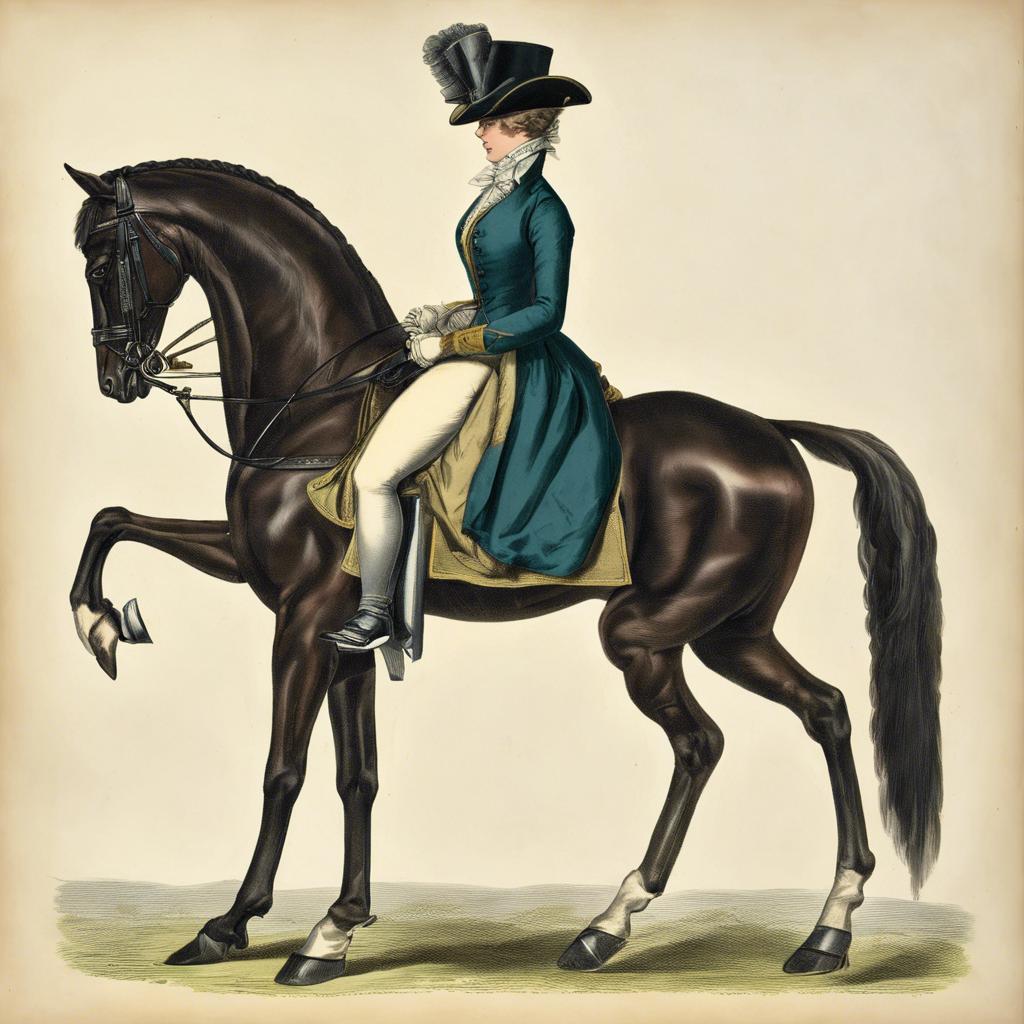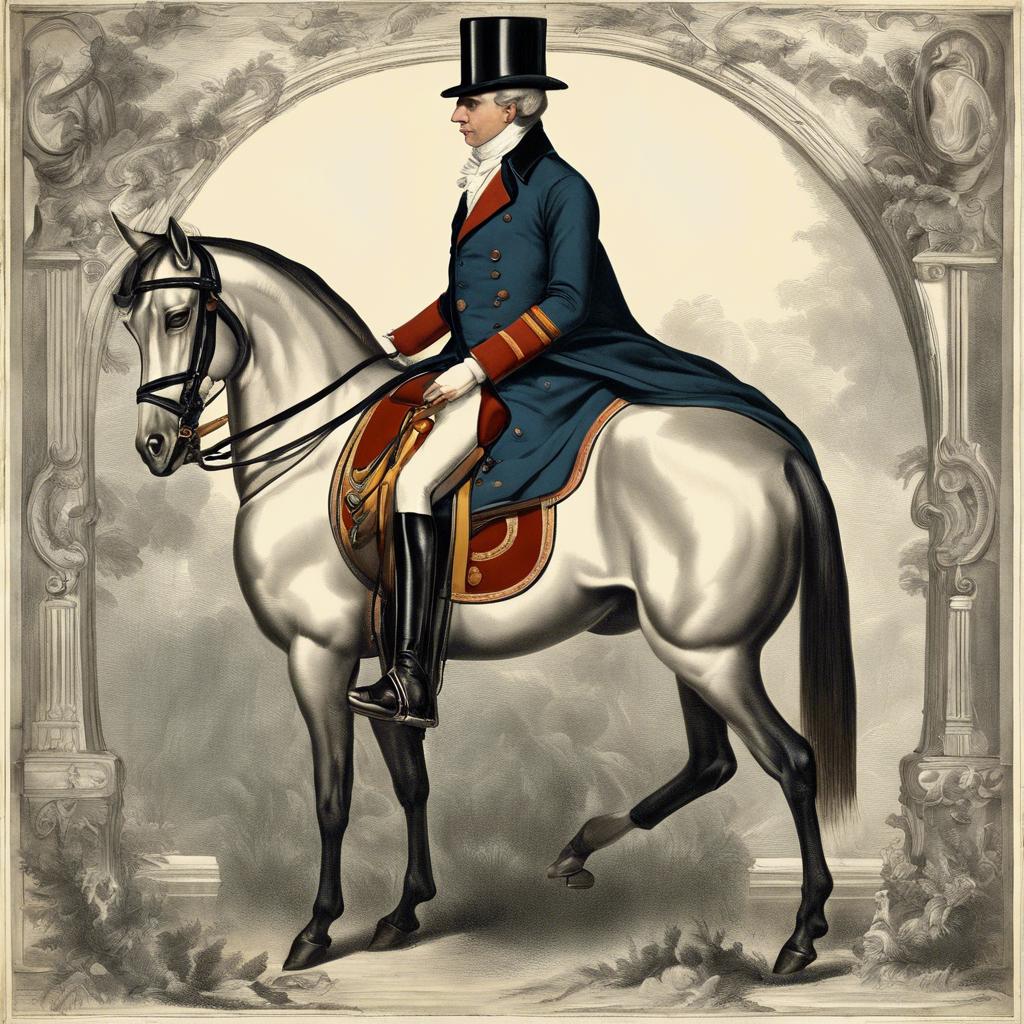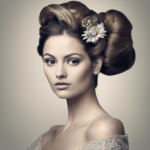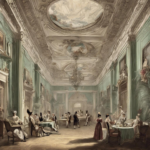During the Regency era, horseback riding was a popular pastime for both men and women of the aristocracy. However, it was not simply a casual activity, but a display of wealth and status. One of the most important aspects of this equestrian fashion was the riding habit. This article will delve into the intricacies of the Regency era riding habit, exploring its significance, construction, and evolution throughout this elegant period in history.
Step Into the World of Cheryl Bolen
Dive into the enchanting stories of love, intrigue, and elegance set in the Regency Era. Cheryl Bolen's novels offer timeless romance and captivating tales that will leave you wanting more.
Explore Cheryl Bolen's Books Now
Introduction: The Regency Era Riding Habit
The Regency era riding habit was a fashionable and practical ensemble worn by women during the regency era corset”>early 19th century. This equestrian outfit consisted of several key components that reflected the style and social norms of the time. The riding habit was not just a means of dressing for the occasion but also a statement of one’s status and wealth.
The typical Regency era riding habit included a tailored jacket, usually made of fine wool or silk, adorned with decorative buttons and trimmings. This jacket was designed to be form-fitting and allowed for ease of movement while riding. The skirt of the riding habit was long and flowing, providing both elegance and modesty. Women often wore a high-necked shirt or chemisette underneath the jacket for added coverage.
Accessories were crucial to completing the look of the Regency era riding habit. Women would wear a wide-brimmed hat adorned with ribbons and feathers, as well as gloves and riding boots. Additionally, a waist-cinching belt or sash was often worn to highlight the waistline and add a touch of femininity to the ensemble. the Regency era riding habit was a symbol of sophistication and refinement, reflecting the changing roles and freedoms of women during this time period.
Historical Significance and Evolution of the Riding Habit
In the Regency era, the riding habit was not only a practical outfit for horseback riding, but also a symbol of social status and fashion. Women’s riding habits consisted of a tailored jacket, typically in a dark color such as navy or black, paired with a coordinating skirt and a waistcoat. These outfits were designed to be both elegant and functional, allowing women to ride comfortably while still looking stylish.
The evolution of the riding habit can be traced back to the 17th century when women first began riding horses for sport and leisure. Over time, the style of the riding habit evolved to reflect changing fashions and societal norms. In the Regency era, riding habits became more streamlined and tailored, reflecting the neoclassical influences of the period. Women’s habits were often adorned with decorative details such as lace, embroidery, and buttons, adding a touch of elegance to the practical garment.
The historical significance of the riding habit lies in its importance as a symbol of women’s independence and freedom. During the Regency era, women who rode horses were seen as adventurous and daring, breaking free from the constraints of traditional gender roles. The riding habit allowed women to participate in equestrian activities alongside men, challenging societal norms and paving the way for greater gender equality in the future.
Materials, Designs, and Accessories of the Regency Era Riding Habit
In the Regency era, the riding habit was a stylish and practical ensemble worn by women for horseback riding. The materials used for these garments were carefully chosen to ensure comfort and functionality. The most common fabrics for a riding habit included wool, silk, and cotton. Wool was favored for its durability and warmth, while silk added a touch of elegance to the outfit. Cotton was also used, especially for summer riding habits, due to its lightweight and breathable nature.
The designs of the Regency era riding habit were characterized by their tailored silhouette and sophisticated details. The habit typically consisted of a jacket or coat, a waistcoat, and a skirt, all carefully coordinated to create a harmonious look. The jacket was often tailored to be form-fitting and featured intricate detailing such as decorative buttons and contrasting trims. The skirt, on the other hand, was usually tailored to be full and flowing, allowing for ease of movement while riding.
Accessories played a crucial role in completing the look of the Regency era riding habit. Women would often accessorize their outfit with a beaver hat, gloves, and a reticule or handbag. The beaver hat was a staple of equestrian fashion and added a touch of sophistication to the ensemble. Gloves were worn both for practical purposes, to protect the hands while riding, and for aesthetic reasons, as they added a touch of refinement to the outfit. The reticule or handbag was used to carry essentials such as a handkerchief or money while out riding.
Tips for Modern Replicas and Incorporating Regency Style in Equestrian Wardrobe
To achieve an authentic Regency era look in your equestrian wardrobe, consider incorporating modern replicas of traditional riding habits. These ensembles typically consist of a tailored jacket, a high-waisted skirt or trousers, and a coordinating waistcoat. Opt for materials such as wool or linen in muted colors like navy, black, or beige to stay true to the period aesthetic. Accessories like gloves, a top hat, and riding boots can further enhance the overall look.
When selecting modern replicas for your Regency-inspired riding habit, pay close attention to details such as the cut and silhouette of the garments. Look for pieces with fitted bodices, puffed sleeves, and full skirts or breeches to capture the essence of the era. Consider incorporating elements like ruffles, lace trim, and delicate embroidery for added authenticity. Accessories like a stock tie, a cravat, or a reticule can help complete the ensemble.
For a truly period-appropriate look, consider adding Regency-era inspired elements to your equestrian wardrobe. Opt for tailored jackets with high collars, long skirts with ample drapery, and intricate embellishments like cascading ruffles or braided trim. Choose materials such as satin, silk, or velvet in rich jewel tones to evoke the opulence of the era. Pair your riding habit with accessories like a feathered hat, gloves, and a riding crop to complete the sophisticated look.
Concluding Remarks
the regency era riding habit served as a symbol of both fashion and functionality for women of the early 19th century. Its tailored silhouette, use of luxurious fabrics, and incorporation of equestrian elements reflected the evolving roles and freedoms of women during this period. As we look back on this exquisite and historically significant garment, we are reminded of the enduring influence of the regency era on fashion and society. The riding habit continues to captivate us with its elegance and sophistication, leaving a lasting legacy in the annals of sartorial history.


